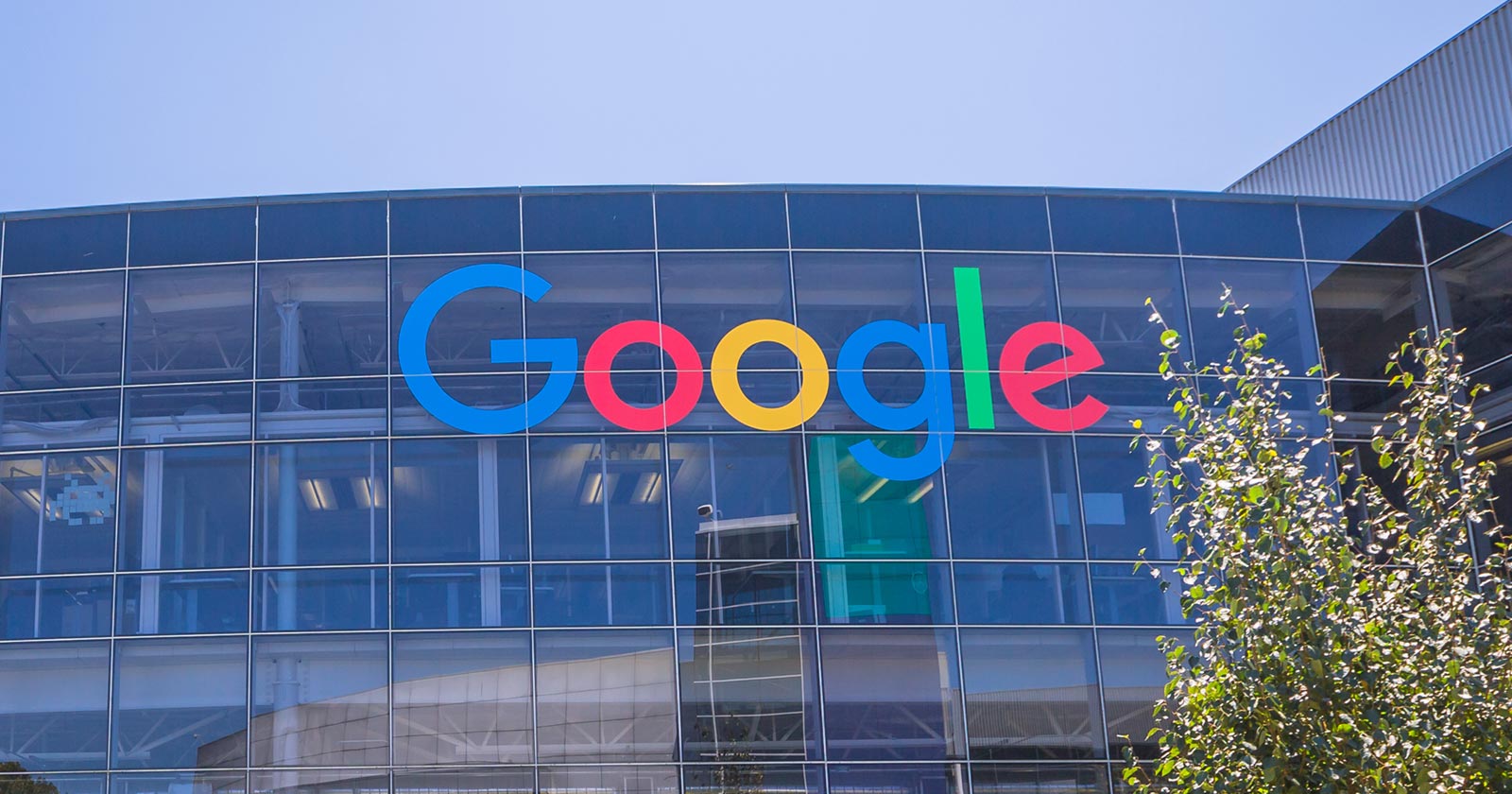SEO
21 Web Directories You’ll Still Want To Use

If you were link building in the early 2000s, you may remember submitting one or more websites to a relevant directory with a decent PageRank to acquire an easy backlink.
But just like many link building tactics of the past, when it became too easy, Google began to frown upon those links.
The question now, is: are web directories still a valuable source of links for webmasters in 2022?
Where Do Web Directories Stand Today?
Today, Google’s algorithm is a lot more complex.
While links are still one of the top-ranking signals, Google no longer views all links equally.
Links from a web directory listing are a lot less influential than a super relevant contextual link from a high-authority site in your niche.
That’s not to say web directories are completely meaningless.
According to Moz research, web directories and local citations still appear to be a small ranking factor – especially for local businesses.
However, Google’s John Mueller himself has said that directory links “generally” don’t help with SEO.
What’s a marketer to do?
Move beyond viewing web directories as a source for links.
Instead, view directories as a source of traffic and trust.
Any business with a local presence needs to maintain their local citations with a consistent NAP, but web directories won’t help with your SEO much beyond that.
The real returns will be from the credibility and traffic they drive to your business site.
As you begin your search for web directories, keep those two criteria in mind.
Consider these questions before you start filling out your listing:
- Is this a reputable site? Put another way: If a customer saw me on this site, would they view my business as more – or less – legitimate?
- Is my target audience likely to visit this site? If not, it’s probably not worth listing your business.
Now, let’s get into what you came here for the web directories that are still relevant today.
Web Directories That Still Have Value Today
In an effort to remain relevant, many web directories of yore have transitioned beyond basic listings to detailed review sites.
Many of the sites I’ve listed below reflect this trend.
I could have included many more on this list, like Jasmine Directory, Brownbook, and Bloggapedia, but based on their current traffic numbers (or lack thereof), I’m not sure they’re worth the effort anymore.
Instead, I’ve chosen to focus on only those sites that are more than a mere citation opportunity for your business.
These are all web directories with real traffic numbers that could translate into real value for your website.
Note: Unless otherwise noted, all traffic estimates were taken from SimilarWeb.com in January 2022. Also, with the exception of BOTW, Yahoo, and BBB, all of these web directories provide free listings.
Useful Web Directories For Any Kind Of Website
1. BOTW
Since 1994, Best of the Web (or BOTW for short) is still a trusted online directory used by more than 16 million businesses.
It receives 60,000-70,000 visits per month.
There’s also blogs.botw.org for blogs and local.botw.org for local businesses.
A lifetime listing (with a link to your website) costs $297.
2. AboutUs
 Screenshot from AboutUs, January 2022
Screenshot from AboutUs, January 2022Originally formed as a business domain directory, AboutUs now allows all kinds of websites to be submitted and discussed.
The site receives 100,000 monthly visitors, on average.
3. Spoke.com
 Screenshot from Spoke, January 2022
Screenshot from Spoke, January 2022Spoke is an online community for finding and discussing business people, companies, news, and more.
On Spoke, you can add a web listing for a business or a person.
As of this writing, 1.4 million companies and 5 million people are listed on the site.
It receives over 100,000 monthly visitors.
For Blogs Only: One Web Directory To Rule Them All
4. Blogarama
 Screenshot from Blogarama, January 2022
Screenshot from Blogarama, January 2022Blogarama features over 154,000 blog listings that are actively updated by site admins.
Of the (very) many blog sites I added my own personal blog to, this is the only one that continues to send me consistent traffic.
Plug in your RSS feed and Blogarama auto-updates your listing with your latest posts.
The site receives over 150,000 visitors monthly.
Relevant Web Directories For Local Businesses
5. Google Business Profile
 Screenshot from Google Business Profile, January 2022
Screenshot from Google Business Profile, January 2022If you’re an SEO professional, you’re already familiar with the vast benefits that make listing your business on Google not just a good idea, but a basic requirement of online marketing.
In late 2021, Google My Business rebranded to Google Business Profile.
Having a Google Business Profile continues to climb in relevance as a local search ranking factor.
Plus, Google is the world’s largest search engine.
Having an optimized Google Business Profile is the best way to make sure you show up for the majority of internet users seeking what your business offers.
6. Bing Places
 Screenshot from Bing Places, January 2022
Screenshot from Bing Places, January 2022Next up is Bing Places, the Google Business Profile equivalent for the world’s second most popular search engine.
While only about 6% of the world uses Bing as their search engine, it’s important to remember that it’s the default search engine for Internet Explorer and Edge, and Microsoft still dominates the desktop computer market.
Make sure you reach those PC users by adding your business to Bing Places.
7. Facebook
 Screenshot from Meta for Business, January 2022
Screenshot from Meta for Business, January 2022Yes, we traditionally think of Facebook (er, Meta) as a social media network.
However, Facebook Pages are indexable in Google Search.
Having an official Facebook Page offers your business, blog, or online publication an additional way to connect and drive discussion with your audience – especially as Facebook inches ever closer to 3 billion monthly users.
Plus, two in three Facebook users visit a Page for a local business once a week.
8. Yelp
 Screenshot from Yelp, January 2022
Screenshot from Yelp, January 2022Yelp still reigns supreme as the review site for local businesses.
If you want customers to find your business, you need to be on Yelp – and you need to be getting positive reviews.
The site currently has 224 million reviews and 90 million monthly users, 97% of whom go on to make a purchase after using Yelp.
9. Foursquare
 Screenshot from Foursquare, January 2022
Screenshot from Foursquare, January 2022Foursquare is nowhere near as popular as Yelp, but it does provide listings for all kinds of local businesses.
The site is visited by 24 million people monthly, and 93% of local storefronts represent 2 million of the businesses that are already listed on Foursquare.
10. Yellow Pages
 Screenshot from The Real Yellow Pages, January 2022
Screenshot from The Real Yellow Pages, January 2022Yes, this is that Yellow Pages.
If you’re wondering whatever happened to the company that used to drop off yellow tomes on your front doorstep, they went online.
Claiming your business is free, although you can expect to be pestered to opt into their advertising options upon signing up.
Beyond a business listing, YP stays relevant by offering coupons, providing listings for a large variety of industries, and regularly posting blog content to drive internal link equity back toward their directory pages.
The site averages 17 million monthly visitors.
11. Chamber Of Commerce
 Screenshot from Chamber of Commerce, January 2022
Screenshot from Chamber of Commerce, January 2022ChamberOfCommerce.com is the online version of your local Chamber of Commerce (which you should also aim to get listed in, by the way).
Around since 1998, this website aims to be the most robust listing of small businesses online.
It also serves a small business owner resource center, through their free listings, paid ad options, and educational articles.
The site lists more than 30 million businesses and monthly traffic numbers are over 780,000.
12. HotFrog
 Screenshot from Hotfrog, January 2022
Screenshot from Hotfrog, January 2022Each month, around 80,000 people search the 69 million businesses listed on HotFrog.
Businesses, sole practitioners, and anyone doing business with a physical address can add their listing for free.
13. Superpages
 Screenshot from Superpages, January 2022
Screenshot from Superpages, January 2022Superpages is a local business directory.
Businesses can add basic information, reviews, photos coupons, and, of course, a link to their website.
The web directory sees an average of 500,000 to 600,000 monthly visitors.
14. MerchantCircle
 Screenshot from MerchantCircle, January 2022
Screenshot from MerchantCircle, January 2022MerchantCircle’s premise is simple: “Find the best local merchants.”
The site includes listings for all kings of merchants and contractors, ranging from attorneys and notaries to realtors and agencies.
Over 100 million consumers visited the site last year to search its listings of 2 million businesses.
The site gets around 1.5 million monthly visits.
15. Better Business Bureau
 Screenshot from Better Business Bureau, January 2022
Screenshot from Better Business Bureau, January 2022Having a listing with the Better Business Bureau (BBB) and being able to reference that accreditation on your own site remains a major trust signal to today’s consumers.
You’ll need to apply for accreditation, but once you’re approved, customers can visit the site to verify you’re a business they can trust.
BBB is one of the top 300 websites in the U.S. and top 1,200 globally.
Monthly traffic numbers range from 12 to 13 million. It’s worth having a listing here.
16. B2B Yellow Pages
 Screenshot from B2B Yellowpages, January 2022
Screenshot from B2B Yellowpages, January 2022This site looks like it never left the 1990s, but it’s still a viable web directory of over 18 million businesses.
The web directory receives around 500,000 to 600,000 visits per month.
17. Nextdoor
 Screenshot from Nextdoor, January 2022
Screenshot from Nextdoor, January 2022In just the past few years, Nextdoor has developed from your friendly neighborhood website into an essential business directory.
Nextdoor has a highly engaged user base, with over 54 million business recommendations on the site.
Once you claim your free business listing, you can market to those users with one of Nextdoor’s advertising options or with Business Posts, which are completely free.
These look and feel very similar to Google Business Posts.
But, they come with one major benefit that’s not available with a Google Business Profile; once posted, these appear instantly in the feed of everyone located within 2 miles of your business.
Did we mention Nextdoor is in the top 200 websites in the U.S., with over 150 million monthly visitors?
In the iconic words of Larry David, that’s pretty, pretty, pretty good.
18. eLocal
 Screenshot from eLocal, January 2022
Screenshot from eLocal, January 2022eLocal is a local business directory that’s been around since 2007.
Between 120,000 and 160,000 monthly visitors use eLocal to find businesses, doctors, contractors, and more.
19. DexKnows
 Screenshot from DexKnows, January 2022
Screenshot from DexKnows, January 2022DexKnows is another local business directory, used by around 100,000 monthly visitors looking for businesses and sole practitioners in their area.
20. Alignable
 Screenshot from Alignable, January 2022
Screenshot from Alignable, January 2022Alignable is a small business referral network first, and a web directory second.
It’s designed to help local business owners connect, collaborate, and refer business to each other.
The site has racked up over 7 million members in less than ten years of operation, and receives over 3.3 million monthly visits.
Alignable can be a valuable site for generating new business through referrals, partnerships, and more.
21. Local.com
 Screenshot from Local.com, January 2022
Screenshot from Local.com, January 2022Local.com lists over 100,000 local businesses with websites and contact information.
The site receives over 2 million monthly visitors.
What Else?
Beyond the directories listed above, there may be additional niche directories with high traffic that are pertinent to your industry, like Avvo for attorneys, Thumbtack for local contractors, or Porch for home improvement professionals.
You can find an excellent list of these, helpfully organized by domain authority, on BrightLocal.com.
There are also services online, notably Moz Local and Yext, that will create, update, and otherwise maintain your local citations across dozens of online directories.
A listing on many of these directories will simply be a citation for citation’s sake, but these services will include the big names like Yahoo, Yelp, and others on our list.
Working with one of these services can significantly speed up the process of getting your website added (and take the work off your plate), which is why they aren’t free.
Depending on how many websites you manage, however, they can be worth it.
Final Thoughts On Web Directories
As you can see, there are still directories that provide value. If a directory receives traffic from your target audience, is relevant to your website, and maintains quality listings, then it’s a good candidate for your backlink profile.
Local businesses may also find relevant directories on the websites for local newspapers, magazines, and business websites. If it’s highly relevant to your website and receives traffic from your community, it’s a good candidate.
Look at the page where your website would be listed and decide if you’re happy to be alongside the other websites on the page.
If you follow these tips, you’ll only choose the most valuable directories for your business.
More resources:
Featured Image: Maxx-Studio/Shutterstock
SEO
Google Clarifies Vacation Rental Structured Data

Google’s structured data documentation for vacation rentals was recently updated to require more specific data in a change that is more of a clarification than it is a change in requirements. This change was made without any formal announcement or notation in the developer pages changelog.
Vacation Rentals Structured Data
These specific structured data types makes vacation rental information eligible for rich results that are specific to these kinds of rentals. However it’s not available to all websites. Vacation rental owners are required to be connected to a Google Technical Account Manager and have access to the Google Hotel Center platform.
VacationRental Structured Data Type Definitions
The primary changes were made to the structured data property type definitions where Google defines what the required and recommended property types are.
The changes to the documentation is in the section governing the Recommended properties and represents a clarification of the recommendations rather than a change in what Google requires.
The primary changes were made to the structured data type definitions where Google defines what the required and recommended property types are.
The changes to the documentation is in the section governing the Recommended properties and represents a clarification of the recommendations rather than a change in what Google requires.
Address Schema.org property
This is a subtle change but it’s important because it now represents a recommendation that requires more precise data.
This is what was recommended before:
“streetAddress”: “1600 Amphitheatre Pkwy.”
This is what it now recommends:
“streetAddress”: “1600 Amphitheatre Pkwy, Unit 6E”
Address Property Change Description
The most substantial change is to the description of what the “address” property is, becoming more descriptive and precise about what is recommended.
The description before the change:
PostalAddress
Information about the street address of the listing. Include all properties that apply to your country.
The description after the change:
PostalAddress
The full, physical location of the vacation rental.
Provide the street address, city, state or region, and postal code for the vacation rental. If applicable, provide the unit or apartment number.
Note that P.O. boxes or other mailing-only addresses are not considered full, physical addresses.
This is repeated in the section for address.streetAddress property
This is what it recommended before:
address.streetAddress Text
The full street address of your vacation listing.
And this is what it recommends now:
address.streetAddress Text
The full street address of your vacation listing, including the unit or apartment number if applicable.
Clarification And Not A Change
Although these updates don’t represent a change in Google’s guidance they are nonetheless important because they offer clearer guidance with less ambiguity as to what is recommended.
Read the updated structured data guidance:
Vacation rental (VacationRental) structured data
Featured Image by Shutterstock/New Africa
SEO
Google On Hyphens In Domain Names

Google’s John Mueller answered a question on Reddit about why people don’t use hyphens with domains and if there was something to be concerned about that they were missing.
Domain Names With Hyphens For SEO
I’ve been working online for 25 years and I remember when using hyphens in domains was something that affiliates did for SEO when Google was still influenced by keywords in the domain, URL, and basically keywords anywhere on the webpage. It wasn’t something that everyone did, it was mainly something that was popular with some affiliate marketers.
Another reason for choosing domain names with keywords in them was that site visitors tended to convert at a higher rate because the keywords essentially prequalified the site visitor. I know from experience how useful two-keyword domains (and one word domain names) are for conversions, as long as they didn’t have hyphens in them.
A consideration that caused hyphenated domain names to fall out of favor is that they have an untrustworthy appearance and that can work against conversion rates because trustworthiness is an important factor for conversions.
Lastly, hyphenated domain names look tacky. Why go with tacky when a brandable domain is easier for building trust and conversions?
Domain Name Question Asked On Reddit
This is the question asked on Reddit:
“Why don’t people use a lot of domains with hyphens? Is there something concerning about it? I understand when you tell it out loud people make miss hyphen in search.”
And this is Mueller’s response:
“It used to be that domain names with a lot of hyphens were considered (by users? or by SEOs assuming users would? it’s been a while) to be less serious – since they could imply that you weren’t able to get the domain name with fewer hyphens. Nowadays there are a lot of top-level-domains so it’s less of a thing.
My main recommendation is to pick something for the long run (assuming that’s what you’re aiming for), and not to be overly keyword focused (because life is too short to box yourself into a corner – make good things, course-correct over time, don’t let a domain-name limit what you do online). The web is full of awkward, keyword-focused short-lived low-effort takes made for SEO — make something truly awesome that people will ask for by name. If that takes a hyphen in the name – go for it.”
Pick A Domain Name That Can Grow
Mueller is right about picking a domain name that won’t lock your site into one topic. When a site grows in popularity the natural growth path is to expand the range of topics the site coves. But that’s hard to do when the domain is locked into one rigid keyword phrase. That’s one of the downsides of picking a “Best + keyword + reviews” domain, too. Those domains can’t grow bigger and look tacky, too.
That’s why I’ve always recommended brandable domains that are memorable and encourage trust in some way.
Read the post on Reddit:
Read Mueller’s response here.
Featured Image by Shutterstock/Benny Marty
SEO
Reddit Post Ranks On Google In 5 Minutes

Google’s Danny Sullivan disputed the assertions made in a Reddit discussion that Google is showing a preference for Reddit in the search results. But a Redditor’s example proves that it’s possible for a Reddit post to rank in the top ten of the search results within minutes and to actually improve rankings to position #2 a week later.
Discussion About Google Showing Preference To Reddit
A Redditor (gronetwork) complained that Google is sending so many visitors to Reddit that the server is struggling with the load and shared an example that proved that it can only take minutes for a Reddit post to rank in the top ten.
That post was part of a 79 post Reddit thread where many in the r/SEO subreddit were complaining about Google allegedly giving too much preference to Reddit over legit sites.
The person who did the test (gronetwork) wrote:
“…The website is already cracking (server down, double posts, comments not showing) because there are too many visitors.
…It only takes few minutes (you can test it) for a post on Reddit to appear in the top ten results of Google with keywords related to the post’s title… (while I have to wait months for an article on my site to be referenced). Do the math, the whole world is going to spam here. The loop is completed.”
Reddit Post Ranked Within Minutes
Another Redditor asked if they had tested if it takes “a few minutes” to rank in the top ten and gronetwork answered that they had tested it with a post titled, Google SGE Review.
gronetwork posted:
“Yes, I have created for example a post named “Google SGE Review” previously. After less than 5 minutes it was ranked 8th for Google SGE Review (no quotes). Just after Washingtonpost.com, 6 authoritative SEO websites and Google.com’s overview page for SGE (Search Generative Experience). It is ranked third for SGE Review.”
It’s true, not only does that specific post (Google SGE Review) rank in the top 10, the post started out in position 8 and it actually improved ranking, currently listed beneath the number one result for the search query “SGE Review”.
Screenshot Of Reddit Post That Ranked Within Minutes
Anecdotes Versus Anecdotes
Okay, the above is just one anecdote. But it’s a heck of an anecdote because it proves that it’s possible for a Reddit post to rank within minutes and get stuck in the top of the search results over other possibly more authoritative websites.
hankschrader79 shared that Reddit posts outrank Toyota Tacoma forums for a phrase related to mods for that truck.
Google’s Danny Sullivan responded to that post and the entire discussion to dispute that Reddit is not always prioritized over other forums.
Danny wrote:
“Reddit is not always prioritized over other forums. [super vhs to mac adapter] I did this week, it goes Apple Support Community, MacRumors Forum and further down, there’s Reddit. I also did [kumo cloud not working setup 5ghz] recently (it’s a nightmare) and it was the Netgear community, the SmartThings Community, GreenBuildingAdvisor before Reddit. Related to that was [disable 5g airport] which has Apple Support Community above Reddit. [how to open an 8 track tape] — really, it was the YouTube videos that helped me most, but it’s the Tapeheads community that comes before Reddit.
In your example for [toyota tacoma], I don’t even get Reddit in the top results. I get Toyota, Car & Driver, Wikipedia, Toyota again, three YouTube videos from different creators (not Toyota), Edmunds, a Top Stories unit. No Reddit, which doesn’t really support the notion of always wanting to drive traffic just to Reddit.
If I guess at the more specific query you might have done, maybe [overland mods for toyota tacoma], I get a YouTube video first, then Reddit, then Tacoma World at third — not near the bottom. So yes, Reddit is higher for that query — but it’s not first. It’s also not always first. And sometimes, it’s not even showing at all.”
hankschrader79 conceded that they were generalizing when they wrote that Google always prioritized Reddit. But they also insisted that that didn’t diminish what they said is a fact that Google’s “prioritization” forum content has benefitted Reddit more than actual forums.
Why Is The Reddit Post Ranked So High?
It’s possible that Google “tested” that Reddit post in position 8 within minutes and that user interaction signals indicated to Google’s algorithms that users prefer to see that Reddit post. If that’s the case then it’s not a matter of Google showing preference to Reddit post but rather it’s users that are showing the preference and the algorithm is responding to those preferences.
Nevertheless, an argument can be made that user preferences for Reddit can be a manifestation of Familiarity Bias. Familiarity Bias is when people show a preference for things that are familiar to them. If a person is familiar with a brand because of all the advertising they were exposed to then they may show a bias for the brand products over unfamiliar brands.
Users who are familiar with Reddit may choose Reddit because they don’t know the other sites in the search results or because they have a bias that Google ranks spammy and optimized websites and feel safer reading Reddit.
Google may be picking up on those user interaction signals that indicate a preference and satisfaction with the Reddit results but those results may simply be biases and not an indication that Reddit is trustworthy and authoritative.
Is Reddit Benefiting From A Self-Reinforcing Feedback Loop?
It may very well be that Google’s decision to prioritize user generated content may have started a self-reinforcing pattern that draws users in to Reddit through the search results and because the answers seem plausible those users start to prefer Reddit results. When they’re exposed to more Reddit posts their familiarity bias kicks in and they start to show a preference for Reddit. So what could be happening is that the users and Google’s algorithm are creating a self-reinforcing feedback loop.
Is it possible that Google’s decision to show more user generated content has kicked off a cycle where more users are exposed to Reddit which then feeds back into Google’s algorithm which in turn increases Reddit visibility, regardless of lack of expertise and authoritativeness?
Featured Image by Shutterstock/Kues
-

 PPC7 days ago
PPC7 days agoCompetitor Monitoring: 7 ways to keep watch on the competition
-

 WORDPRESS6 days ago
WORDPRESS6 days agoTurkish startup ikas attracts $20M for its e-commerce platform designed for small businesses
-

 PPC7 days ago
PPC7 days ago31 Ready-to-Go Mother’s Day Messages for Social Media, Email, & More
-

 PPC6 days ago
PPC6 days agoA History of Google AdWords and Google Ads: Revolutionizing Digital Advertising & Marketing Since 2000
-

 SEARCHENGINES7 days ago
SEARCHENGINES7 days agoMore Google March 2024 Core Update Ranking Volatility
-

 MARKETING5 days ago
MARKETING5 days agoRoundel Media Studio: What to Expect From Target’s New Self-Service Platform
-

 MARKETING7 days ago
MARKETING7 days agoHow To Adapt Your SEO and Content Strategies for SGE and AI Experiences
-

 SEO5 days ago
SEO5 days agoGoogle Limits News Links In California Over Proposed ‘Link Tax’ Law















You must be logged in to post a comment Login